Safest Place on Earth: Reflections on collective practices in Gudskul’s Sekolah Temujalar at documenta fifteen
Tian Zhang
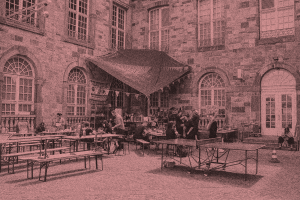
Several summers ago, I was part of a group of collectives from the Asia-Pacific living in one of the oldest museums in the world. We were brought together by Indonesian collective Gudskul for the fifth ‘batch’ of their collective studies program, Sekolah Temujalar. Translating to ‘school’ (sekolah) ‘to come together’ (temu) and ‘to spread apart’ (jalar), the program invited participating collectives to coalesce for an intensive period of exchange, before returning to share the knowledge and resources gained with their home communities.
Sekolah Temujalar Batch 5 was held in conjunction with documenta fifteen, an international exhibition1 occurring for 100 days every five years in Kassel, Germany. This iteration of Documenta in 2022 was curated by Indonesian collective ruangrupa — the first Asian and first Muslim artistic directors, and the first collective to lead this major global event. For the first time in Documenta’s 67-year history, there was a strong focus on collective and community-based practices, particularly from the Global South.
[1] I use the term ‘exhibition’ here and will continue to use it in this text, noting that documenta fifteen was an exhibition in an expanded sense. This iteration challenged the exhibitionary format by including and prioritising friendships, collaboration, festivals, karaoke, cooking, study programs, self-publishing, spontaneous activities and more, in addition to more traditional exhibitions in venues.
ruangrupa implemented a decentralised curatorial framework, in which a core group of selected ‘lumbung members’ and ‘lumbung artists’ were encouraged to extend invitations to their collaborators, who in turn invited more collaborators, and so forth. Following this process, lumbung artists Gudskul selected six collectives to participate in Sekolah Temujalar Batch 5: Arab Theatre Studio (Dharug Country/western Sydney), Floating Projects (Hong Kong), Kolektif Hysteria (Indonesia), Lifepatch (Indonesia), Sudut Kalisat (Indonesia), and Tindakan Gerak Asuh/TIGA (Malaysia). Additionally, Pari, a collective-run space in Parramatta, Dharug Country — of which I am a co-director — was invited to co-facilitate the program with Gudskul, as an extension of our ongoing collaborative relationship.
Over 50 days and nights, we were housed in a makeshift dormitory that occupied one of the rooms of the Museum Fridericianum, one of the first public museums in the world and a central site for Documenta exhibitions since its inception. This live-in arrangement arose out of necessity — Gudskul needed somewhere for participants to stay — but what emerged was unexpected and transformative. By inhabiting this institution, it was reconfigured from a dead space for objects and artworks to a living space for joy, nourishment, collaboration and friendship.
Unfortunately, our time at documenta fifteen was not without its challenges. In the lead up to and over the course of documenta fifteen, ruangrupa, some participating artists and, eventually, the entire exhibition, came under attack from right-wing groups, German media and politicians, due to participants’ personal support of Palestinian liberation. Much of the coverage of documenta fifteen became subsequently caught up in allegations of antisemitism. While one artwork was found to contain antisemitic imagery — a small image within a large-scale banner by Taring Padi from 2002, which was taken down in opening week — the attacks and allegations started long before the exhibition opened and were not made in the interests of cultural safety; rather, they served as a tactic to discredit the exhibition and quash pro-Palestinian sentiments.2
[2] This is a brief summary of a complex set of events and contexts. For more details on the attacks on the lumbung community, and context around pro-Palestinian censorship in Germany, refer to links at the end of this text.
Two years later, we are now (at time of writing) eleven months into a livestreamed genocide in Palestine, the most recent intensification of more than 76 years of Israeli occupation. In so-called Australia and elsewhere, we are witnessing bullying, censorship and silencing of pro-Palestinian voices, and antisemitism being weaponised against those who advocate for liberation, safety and justice.3 It is from this context that I write this reflection, from my perspective as a co-facilitator of Sekolah Temujalar and informed by countless conversations with my peers during and after the residency. I want to revisit this project as an account of some of the collective practices we utilised in the face of ongoing harassment and censorship, and as an offering to those who may be struggling in these devastating times.
[3] For more information on the weaponising of antisemitism and examples of pro-Palestinian censorship in so-called Australia, refer to links at the end of this text.
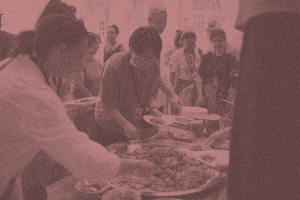
Everyone Gets Fed
Installed in the museum’s carpark, Gudkitchen was an outdoor communal kitchen and hangout space that served as a functional kitchen for the Sekolah Temujalar residents and a resource for the documenta fifteen community. Gudkitchen relied on the practice of lumbung, which was the central organising principle of documenta fifteen, proposed by ruangrupa as a process by which participating artists would work together, rather than a theme. Translating to ‘rice barn’ in Bahasa Indonesia, ‘lumbung’ is a traditional method of communal storage, where surplus grain is stored for future community use. In this method of pooling grain, everyone can be fed, irrespective of the outcome of each household’s harvest.
From morning to late night and early hours again, there was always someone cooking in Gudkitchen. In keeping with the practice of lumbung, communal meals were made for whoever was around and in return, documenta fifteen artists and visitors cooked for us, restocked our pantry and donated money for supplies. This model relied on everyone contributing ‘surplus’ resources — such as time, food, supplies and money — so that we could all be fed. While contributions ebbed and flowed, Gudkitchen felt like a self-sustaining resource that was always providing and provided for. I have since wondered what the world might be like if we could apply the principles of Gudkitchen to everything — if each of us contributed what we could to ensure everyone was catered for.
‘Piket’, loosely translating to ‘housework’, was a system of cleaning and maintenance for the kitchen and dormitory. As there was no plumbing to Gudkitchen, water was physically carried to and from the museum’s bathroom. The water cycle was a delicate balance that relied on lumbung — everyone pitching in to ensure we had enough water to cook and clean, and that wastewater didn’t overflow. We improvised elaborate systems of bulk cleaning dishes in the absence of running water. Piket was iterative and adaptive to the needs of the space and the group. People gravitated to certain tasks based on their skills, capacities and abilities — carrying water, washing dishes, buying groceries, cleaning, maintenance and improvisations. Piket reminded us that we all play to our strengths and no one can possibly do it all.
Gudkitchen was the beating heart, the circulation of lifeblood for many at documenta fifteen. As the exhibition came under increasing scrutiny from the media and politicians, it was easy to fry our nervous systems constantly responding to new allegations and wondering what — and who — would be targeted next. Gudkitchen became a haven for artists to take respite, find solidarity and be nourished, physically and emotionally. At one point someone had carved into one of the benches: 'safest table on earth' — and we felt it.
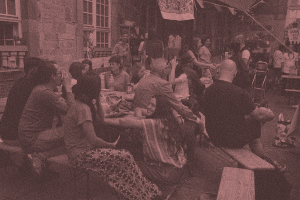
Hanging out
‘Nongkrong’ or ‘hanging out’ was an integral part of our time. The collective studies program involved sessions and activities facilitated around Gudskul’s 11 Subjects.4 Alongside this method for formal learning and exchange was the Nongkrong Curricula, a dedicated curriculum for informal learning through hanging out. The Nongkrong Curricula comprised three tenets — ‘make friends’, ‘learn from each other’, and ‘self-organise’. ‘Making friends’ was the foundational step that allowed the other two tenets to be activated. ‘Learning from each other’ was only possible after ‘making friends’, when enough trust could be developed for knowledge exchange. ‘Self-organising’ could only occur after we had hung out and ‘learnt from each other’, allowing collaborative projects to emerge from the strengths and interests of the group.
[4] The 11 Subjects were: Collective Practice Intelligence, Collective Cultural Discourse, Collective Sustainability, Spatial Practice, Workshop, Intermedia, Public Relations, Art Laboratory, Knowledge Garden, Art Collective Review, and Articulation & Curation.
Through organised and spontaneous exchanges, Sekolah Temujalar facilitated friends-making amongst participants and the wider documenta fifteen community. These included large social events at Gudkitchen such as communal cook-ups and parties that almost always descended into karaoke. Not only were these events essential for connecting with the public, but they were also crucial for the inflow of resources into the Gudkitchen ecosystem, including new friends, knowledges and donations. Even Piket became a site for friends-making — bonding over extended periods of scrubbing and rinsing.
Nongkrong helped to facilitate familiarity and trust amongst participants, which was essential for living and sharing space together. Importantly, as the mood around documenta fifteen became increasingly pressurised, nongkrong — and karaoke — became a way to blow off steam and find connection. Nongkrong was a distinctly anti-capitalist endeavour, prioritising informality and spontaneity, and letting go of productivity and fixed outcomes. With no agenda other than to hang out, we were allowed and encouraged to just be with each other, support each other, and develop relationships and collaborations at our own pace.
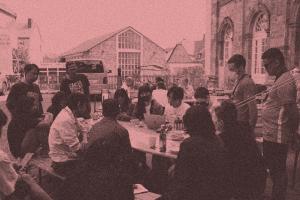
Collective Decision Making
With more than fifteen people from eight collectives co-habiting and participating in Sekolah Temujalar, clear communication and collaborative decision making were crucial. Regular all-in meetings, called ‘majelis’, were held to discuss everything from programming to cleaning. Our majelis was modelled on the methodology that ruangrupa had implemented with documenta fifteen artists in the lead up to, during, and after the exhibition, and which Gudskul also regularly uses within their collective. In this process, all issues are brought up and discussed with the group in an open forum to find a common way forward.5
[5] While never referenced explicitly, our collective decision-making process resembles consensus decision making. For more information on the consensus model, refer to links at the end of this text.
Our weekly meetings quickly became bi-weekly: one majelis focused on production and programming, and another, jokingly called the ‘emotional majelis’, focused on wellbeing. While the aim of the production and programming majelis was to plan upcoming events and projects, they were often dominated by hours spent discussing piket. I was reminded that bare necessities, like food and a functioning living and working space, needed to be addressed first before we could focus on projects. It also reminded me that many of us are first introduced to collective practice, rather unknowingly, in domestic settlings such as sharehouses.
The emotional majelis gave us space to delve into individual and collective wellbeing. Living away from home and in close quarters with our collaborators was an intense experience, let alone the additional stress brought on by the media frenzy and public intrusions into our space. It was important to acknowledge and negotiate everyone’s needs and boundaries, particularly around things like safety and cleanliness. As with any group, there were times participants’ needs and preferences overlapped or conflicted; majelis was an important process for negotiating these collectively. This required a high level of collaboration and trust within the group, which was built through friends-making and hanging out. The majelis process complemented nongkrong by providing a more formal outlet for collective discussions and resolutions. Even though some majelises would go on for hours and hours, it was a necessary process for everyone to be able to raise ideas and concerns to be heard and held by the group.
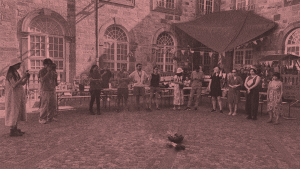
Collective healing
In the spirit of the Nongkrong Curricula — to make friends, learn from each other and self-organise — the participants of Sekolah Temujalar Batch 5 organised themselves into Lumbung Love Collective (LLC) to extend the values and learnings they had garnered through self-organised collective projects. One project, Lumbung Love Stories, solicited and shared anonymous letters from Gudkitchen visitors about love at documenta fifteen. Writing about romantic encounters, unrequired feelings, friendships, love for the exhibition and even modes of transport, Lumbung Love Stories gave participants, artists and visitors a moment to reflect on their experiences at documenta fifteen and find emotional release.
Another project was an afternoon of cleansing and healing, initiated after several pro-Palestinian artworks in the Museum Fridericianum had been targeted by the media. These felt close to home, figuratively and literally. LLC invited artists exhibiting at the Fridericianum to gather, cleanse and heal our collective spaces. Artists and collectives performed cultural rituals to shift the negative energy brought on by what felt like a never-ending onslaught of sensationalist media. The afternoon of ceremonies helped us to collectively ground, strengthen and heal. Such intimate and vulnerable projects could not have been realised had we not spent weeks communing, witnessing and supporting each other through collective practice.
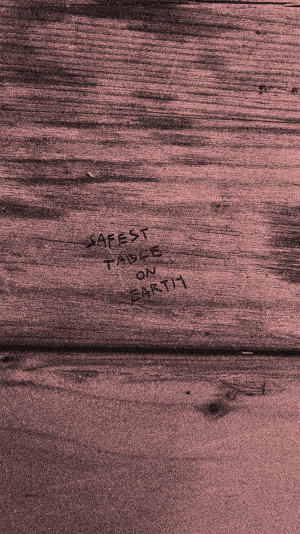
***
Sekolah Temujalar was much more than a project or residency. In living out the processes of lumbung, nongkrong, piket and majelis, in prioritising making friends, learning from each other and self-organising, we glimpsed a blueprint for how we might thrive outside of individualism and capitalism. We experienced a microcosm in which the community held us and the community would provide. Even though we were living in a museum, even though we found ourselves under immense political pressure and attacks, we knew we could rely on, nourish and heal with each other — and it felt like the safest place on earth.
Further Reading/Listening
On the events and attacks on the lumbung community at documenta fifteen:
Rahel Aima & Catherine G. Wagley, ‘Reviewing the Reviews: Documenta 15,’ Momus, December 10, 2022, https://momus.ca/reviewing-the-reviews-documenta-15/ (accessed September 2024).
‘Censorship Must Be Refused: Letter from lumbung community,’ e-flux, July 27, 2022, https://www.e-flux.com/notes/481665/censorship-must-be-refused-letter-from-lumbung-community (accessed September 2024).
On pro-Palestinian activism and censorship in Germany:
Daniel Denvir, host, 'The German Question w/ Emily Dische-Becker' The Dig (podcast), January 31, 2024, https://thedigradio.com/podcast/the-german-question-w-emily-dische-becker/ (accessed September, 2024).
On the weaponising of antisemitism:
Jewish Voice for Peace & PARCEO, ‘On Antisemitism, Anti-Zionism and Dangerous: Conflations: A Jewish Voice for Peace and PARCEO Explainer,’ Jewish Voice for Peace, https://www.jewishvoiceforpeace.org/2023/11/09/antisemitism-dangerous/ (accessed September 2024).
On Pro-Palestinian censorship in so-called Australia:
Chris Dite, ‘In Australia, Pro-Palestine Writers Are Defying Censorship: An interview with Jinghua Qian & Omar Sakr,’ Jacobin, March 28, 2024, https://jacobin.com/2024/03/state-library-victoria-firing-israel-palestine (accessed September 2024)
Rosemary Sorensen, ‘Pro-Palestinian supporters under attack in Australia,’ Independent Australia, published February 4, 2024, https://independentaustralia.net/business/business-display/pro-palestinian-supporters-under-attack-in-australia,18296 (accessed September 2024).
On Consensus Decision Making:
‘Consensus Decision Making: a short guide,’ Seeds For Change, https://www.seedsforchange.org.uk/shortconsensus (accessed September 2024).
Acknowledgements
The majority of this text was written on unceded, sovereign Dharug Country. Always was, always will be Aboriginal land.
Thank you to Gudskul for the generosity, to Pari for the support, and to all the friends I met along the way. Thank you to Subash Thebe Limbu and Naomi Segal for reading drafts of this text.
Image References (top to bottom):
Images #1, #2, #3, #4: Courtesy of Gudskul.
#5: Courtesy of Lumbung Love Collective.
#6: Photograph by John Chow.